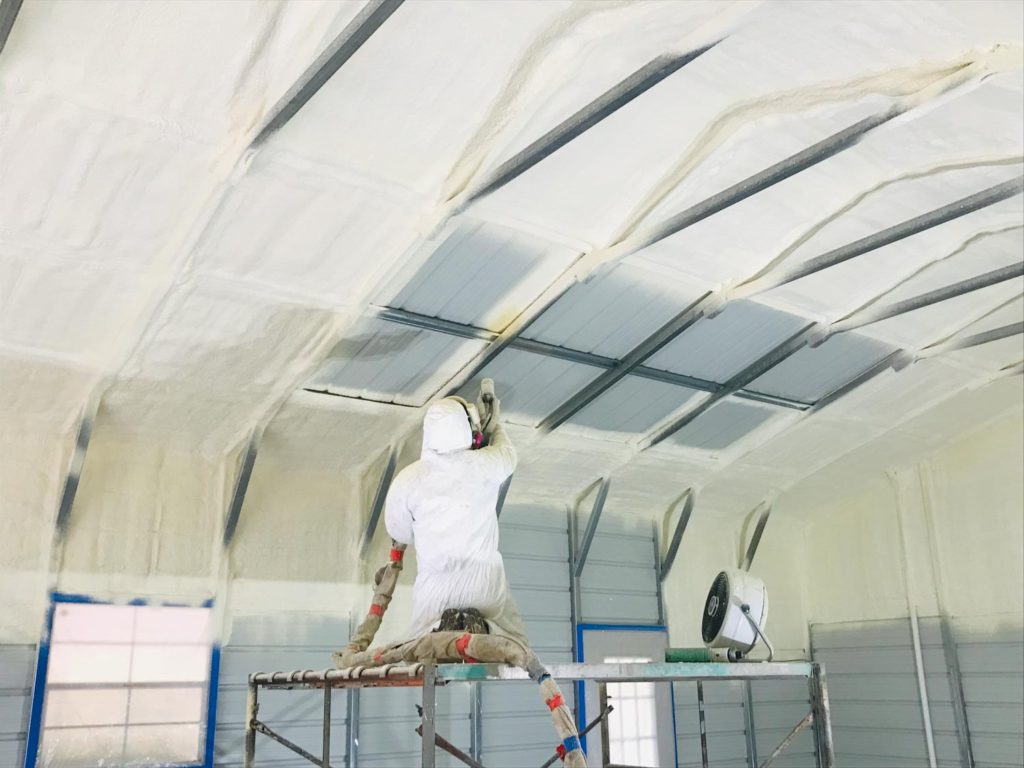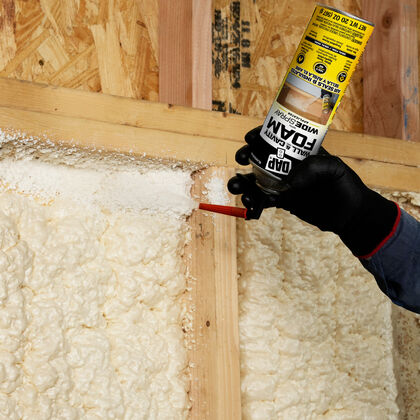The Process of Using Spray Foam: What You Required to Know
The Process of Using Spray Foam: What You Required to Know
Blog Article
Spray Foam: The Ultimate Solution for Air Sealing and Insulation
Spray foam insulation has arised as a leading option for reliable air sealing and thermal insulation, providing an one-of-a-kind combination of buildings that set it besides standard methods. Its capacity to expand and fill up voids makes it specifically efficient in preventing air leak, which can significantly affect energy effectiveness. Understanding the complete scope of its advantages, installment processes, and contrasts with various other insulation types is vital for making informed decisions. As we check out these aspects, the effects for both brand-new building and constructions and retrofits come to be progressively significant. What factors should affect your option?
What Is Spray Foam?
Spray foam is a functional insulation material that combines the principles of air securing and thermal resistance to enhance energy efficiency in structures. Composed mostly of polyurethane or other comparable substances, spray foam is used as a liquid that expands upon contact with surfaces, developing a solid, continuous layer of insulation. This special property allows it to load spaces, splits, and voids that standard insulation materials might overlook, providing a premium air seal.
There are 2 major sorts of spray foam: open-cell and closed-cell. Open-cell spray foam is lighter and extra adaptable, supplying outstanding audio absorption and a reduced R-value per inch - Spray Foam. In contrast, closed-cell spray foam is denser, supplying a greater R-value, dampness resistance, and added architectural stability to building parts
The application process normally involves specific tools, making certain a smooth application that adheres to numerous substrates, consisting of concrete, metal, and timber. This flexibility makes spray foam ideal for both new buildings and retrofitting existing frameworks. Its ability to develop an impermeable barrier considerably adds to decreasing power usage and boosting interior air top quality, consequently making it a favored option amongst homeowners and home builders alike.
Advantages of Spray Foam Insulation
One of the most significant benefits of spray foam insulation is its phenomenal capability to produce a constant air obstacle, which properly minimizes power loss. Unlike typical insulation materials, spray foam broadens to fill up gaps and splits, making certain that air leakage is substantially reduced. This particular not just boosts power performance but likewise brings about lower energy costs with time.
Additionally, spray foam insulation provides exceptional thermal resistance, adding to an extra steady indoor environment. Its high R-value per inch permits efficient insulation in confined rooms, making it optimal for attic rooms, walls, and crawl spaces. The moisture-resistant homes of spray foam aid avoid mold and mildew and mildew development, promoting much healthier living conditions.
An additional critical benefit of spray foam insulation is its sound-dampening top qualities (Spray Foam). It efficiently reduces sound transmission in between areas, developing a quieter and a lot more comfortable home atmosphere. The sturdiness of spray foam also stands out, as it does not droop or work out over time, preserving its efficiency throughout its life expectancy
Just How Spray Foam Functions
Comprehending exactly how spray foam insulation functions is essential for valuing its important link performance in air securing and thermal resistance. Spray foam insulation contains two main components: isocyanate and polyol resin. When these elements are blended, they undergo a chemical response that triggers the material to increase swiftly, creating a thick foam that fills spaces, cracks, and dental caries.
As the foam expands, it adheres to surfaces, creating an impermeable seal that dramatically reduces air seepage. This particular makes spray foam insulation very effective at protecting against drafts and dampness infiltration, which can cause power loss and damage gradually. Additionally, the closed-cell variation of spray foam offers premium thermal resistance as a result of its rigid framework, effectively reducing warmth transfer.
The unique homes of spray foam permit it to comply with uneven surface areas, making certain extensive coverage and a seamless obstacle. Consequently, spray foam insulation not just boosts energy performance however also adds to boosted interior air high quality by decreasing the build-up of allergens and toxins. Ultimately, understanding the mechanics behind spray foam highlights its duty as a remarkable option for insulation and air securing in both commercial and property applications.
Installation Refine Review

Prior to setup, the area must be appropriately cleaned up and prepped, ensuring that surface areas are free from wetness, debris, and dust. This step is crucial since contaminants can endanger adhesion and overall performance. When the location is prepared, the application entails mixing both components of the spray foam, which broadens upon contact and loads gaps successfully.
Trained professionals ought to conduct the installment, utilizing customized devices to ensure consistent insurance coverage and optimal thickness. Security safety navigate here measures, including using protective equipment and making sure correct air flow, are crucial throughout this procedure. After application, the foam commonly treatments rapidly, creating a solid barrier that enhances power efficiency.
Comparing Spray Foam to Traditional Insulation
When assessing insulation options, spray foam insulation stands out in contrast to traditional products such as fiberglass and cellulose. Unlike fiberglass and cellulose, which can enable air infiltration, spray foam expands upon application, filling up crevices and gaps to develop a closed seal.
Additionally, spray foam gives a greater R-value per inch than conventional insulation types, providing even more reliable thermal resistance in a thinner profile. This characteristic is specifically valuable precede with minimal tooth cavity depth. Additionally, spray foam is immune to dampness and mold development, which can be a considerable interest in cellulose and fiberglass, particularly in humid atmospheres.
Nonetheless, spray foam insulation usually brings a higher in advance cost than its conventional equivalents. Homeowners should consider this preliminary financial investment against long-lasting power financial savings and efficiency benefits. Ultimately, while both insulation kinds serve their objective, spray foam becomes an extra sophisticated remedy for contemporary insulation demands, especially in regards to air sealing and thermal effectiveness.

Conclusion
In recap, spray foam insulation stands for an extremely effective option for accomplishing optimal air securing and thermal resistance. Its unique properties, consisting of dampness resistance and noise dampening, make it ideal for numerous applications in both brand-new buildings and retrofitting jobs (Spray Foam). The preliminary prices may be greater contrasted to traditional insulation materials, the long-lasting benefits, such as significant energy savings and boosted interior air high quality, justify the you could look here financial investment and emphasize its value in modern building methods.
Spray foam insulation has emerged as a leading service for reliable air sealing and thermal insulation, supplying a special mix of homes that establish it apart from conventional methods.Spray foam is a flexible insulation material that incorporates the concepts of air sealing and thermal resistance to boost energy effectiveness in buildings.When assessing insulation choices, spray foam insulation stands out in contrast to standard materials such as fiberglass and cellulose. Eventually, while both insulation types serve their purpose, spray foam arises as a much more sophisticated solution for contemporary insulation needs, particularly in terms of air securing and thermal effectiveness.
In summary, spray foam insulation stands for an extremely reliable solution for achieving optimal air securing and thermal resistance.
Report this page